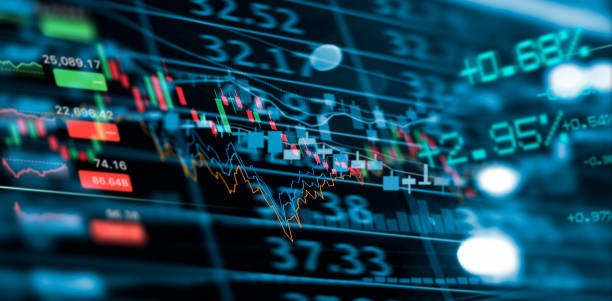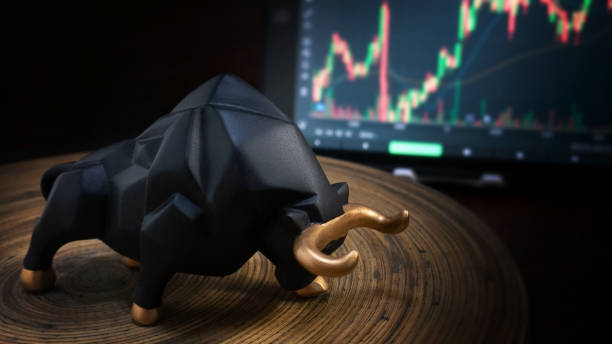The word ‘defensive’ does not exactly appeal to most people looking for a stock in which to invest, but defensive stocks have proven critically important when navigating stock market volatility and more importantly, market crashes. Their biggest appeal is that they tend to shield investors during financial recessions or crashes as diversification reduces the correlation of investments held within a portfolio. However, defensive stocks are not just useful during recessions; they can also appeal to traders with lower risk tolerances (i.e. looking for less volatility in their investments) simply looking to preserve their capital. This article explains what defensive stocks are, why they are useful and how traders or investors can benefit from trading them. If you are new to stock trading, you may want to read about stock market basics, for an introduction into the world of stock trading.

WHAT IS A DEFENSIVE STOCK
Defensive stocks
Defensive stocks, also known as ‘non-cyclical stocks’ or ‘safe haven stocks’ comprise of companies that experience little variation in earnings and dividend payouts regardless of the state of the overall economy. Therefore, a defensive stock provides consistent dividends and stable earnings across market conditions. In general, this is because defensive stocks produce goods or services that are considered to be essential, meaning that the demand for these goods/services remain rather consistent. It is important to note that holding defensive stocks provides no guarantee against negative returns; however, defensive stocks have historically weathered economic recessions better than cyclical stocks, which tend to track momentum of the underlying economy in the near-term.
WHAT ARE THE MOST DEFENSIVE STOCKS
Defensive stock examples can be found within the utility, healthcare and consumer staples stock market sectors and generally exhibit the following characteristics: Strong balance sheets – Companies that maintain a low debt to equity ratio are better equipped to meet their debt repayments under difficult market conditions. Low beta – The ‘beta’ of a stock measures the correlation of the stock relative to the broader market. A beta close to 1 means that the stock performs similarly to the broader stock market and a low beta (close to 0) has less association with the broader market. Defensive stocks have beta values that are either close to 0 or have a negative beta. P/E Ratio – A price-to-earnings ratio or P/E ratio, is a well-known formula used to value a stock. A P/E ratio can also help to identify a defensive stock as they generally have a low price/earnings ratio. Stocks with lower P/E ratios are often indicative of defensive stocks because investors are not forced to pay a premium to own a stock with massive earnings growth potential. Instead, the ratio is low because earnings growth is steady, or close to zero, justifying a lower price relative to earnings. For a full list of safe haven stocks for each of the three stock market sectors, read our article on safe haven stocks.

DEFENSIVE STOCK EXAMPLE
The stock market affects the economy in many ways and none more so than a severe recession or market crash. Market crashes like the Global Financial Crisis in 2008/2009 result in mass retrenchments, forced liquidations of large companies and government bailouts for sectors that pose a systemic threat should they fail. During times of economic turbulence, investors attempt to shield themselves from assets that are declining in value and some of the worst performing assets tend to be cyclical stocks – stocks that are strongly correlated to the underlying economy. However, defensive stocks have often outperformed the overall equity market during market crashes with their desirable non-cyclical qualities. An effective way to illustrate the tendency of defensive stocks to outperform during times of turbulence is to compare the performance of a defensive stock to its broader equity market’s performance over the same timeframe. For defensive stocks traded in the United States, you’ll want to look at the relative performance compared to one of the major indices, the Dow Jones Industrial Average, the S&P 500, or the NASDAQ 100.Below is a chart of the S&P 500 during the 2008/09 financial crisis. It is clear to see that the US equity market, as a whole, experienced a drastic decline. The S&P 500, due to its components, has a large weighing in cyclical stocks that suffered tremendously during this time – driving the index lower.
S&P500 showing the decline in the US stock market
To the contrary, Gilead Sciences, a biopharmaceutical company, managed to endure the financial crisis and come out at similar levels at whichit entered. Their share price rose sharply, dropped sharply and then consolidated to leave the share price a lot better off than most cyclical stocks. Intuitively, this makes sense: consumers will demand healthcare and drug treatments regardless of the state of the economy. To this end, biopharmaceutical and healthcare stocks tend to be defensive stocks as they are counter-cyclical in nature.

Gilead Sciences Inc outperforming the market
It is crucial to note that defensive stocks do not necessarily rise in value during economic downturns. They may rise, hold value or even decline, nevertheless, they are desirable because they tend to outperform the wider stock market during crashes.
Building Confidence in TradingBuilding Confidence in Trading
RECOMMENDED BY RICHARD SNOW
Learn how to develop a systematic approach to trading
Get My Guide
OTHER DEFENSIVE ASSETS
Thankfully defensive assets are not restricted to the equity market but expand to other markets such as the forex market, the commodity market and the bond market.
Safe-haven currencies:
US Dollar, Euro, Japanese Yen and Swiss Franc are often regarded as safe haven currencies because they tend to be negatively correlated with stocks during market crashes. In general, these defensive currencies have current account surpluses, strong financial systems, relatively low government debt to GDP, stable economic growth and sufficient liquidity among other desirable characteristics. It’s crucial to note that safe haven currencies won’t necessarily have all these characteristics but will certainly benefit from most of them. Defensive commodities: Gold is universally recognized as a safe-haven metal because there will always be a demand for the metal (i.e. jewelry and some industrial uses) and its supply is naturally limited to the amount of gold that can be mined in all the earth. This is different to currencies because central banks can increase the supply of money via monetary policy which runs the risk of reducing the value of the currency through inflation. Of course, little needs to be said about gold’s special place in monetary affairs throughout human economic history.

Gold ForecastGold Forecast
RECOMMENDED BY RICHARD SNOW
Take a look at our latest quarterly gold forecast
Get My Guide
US Government bonds:
When stocks fall, traders and investors often purchase US government bonds in an attempt to transfer funds from a risky asset to a more stable asset. Government bonds tend to be low return investment vehicles that are backed by the US government and are considered among the safest bonds in the world due to the strength of the US economy and stability of the US government.
DEFENSIVE STOCKS FAQ SECTION
Are defensive stocks only beneficial during recessions? While defensive stocks have historically outperformed cyclical stocks in recessions, they provide value in the good times too. Defensive stocks are relatively cheap allowing investors to snap them up at great prices when cyclical stocks are advancing. Furthermore, defensive stocks can provide an important benefit in diversifying a stock portfolio, even during economic booms.

